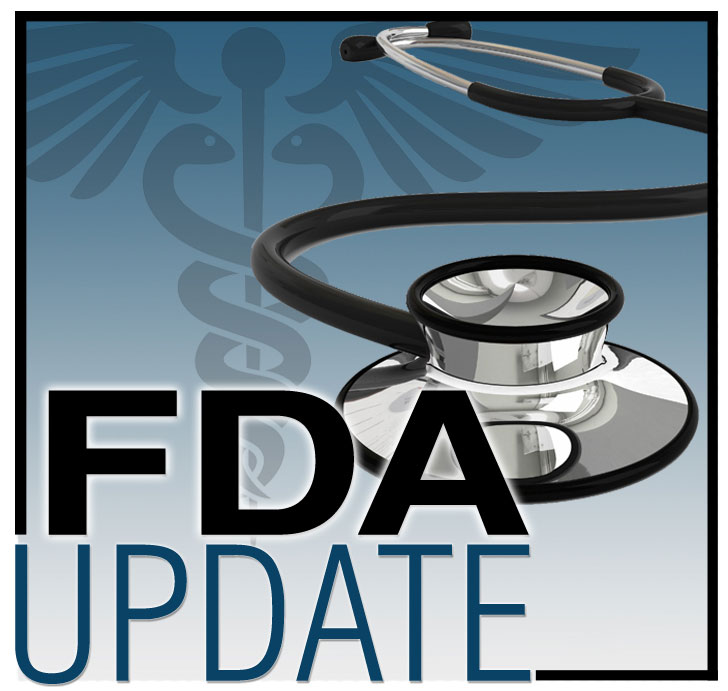FDA Approves Tremelimumab in Combination With Durvalumab for Unresectable Hepatocellular Carcinoma
On October 21, 2022, the U.S. Food and Drug Administration (FDA) approved (https://www.fda.gov/drugs/resources-information-approved-drugs/fda-approves-tremelimumab-combination-durvalumab-unresectable-hepatocellular-carcinoma) tremelimumab (Imjudo®) in combination with durvalumab for adult patients with unresectable hepatocellular carcinoma (uHCC).

Efficacy was evaluated in HIMALAYA (NCT03298451), a randomized (1:1:1), open-label, multicenter study in patients with confirmed uHCC who had not received prior systemic treatment for hepatocellular carcinoma. Patients were randomized to one of three arms: tremelimumab 300 mg as a one-time, single IV infusion plus durvalumab 1,500 mg IV on the same day, followed by durvalumab 1,500 mg IV every four weeks; durvalumab 1,500 mg IV every four weeks; or sorafenib 400 mg orally twice daily, until they experienced disease progression or unacceptable toxicity. The approval is based on a comparison of the 782 patients randomized to tremelimumab plus durvalumab to sorafenib.
The major efficacy outcome was overall survival (OS). Patients receiving tremelimumab plus durvalumab demonstrated a statistically significant and clinically meaningful improvement in OS compared to those receiving sorafenib (stratified hazard ratio [HR] = 0.78; 95% CI = 0.66, 0.92; two-sided p value = 0.0035) and median OS was 16.4 months (95% CI = 14.2, 19.6) versus 13.8 months (95% CI = 12.3, 16.1), respectively. Additional efficacy outcomes included investigator-assessed progression-free survival (PFS) and overall response rate (ORR) according to RECIST v1.1. Median PFS was 3.8 months (95% CI = 3.7, 5.3) and 4.1 months (95% CI = 3.7, 5.5) for the tremelimumab plus durvalumab and sorafenib arms, respectively (stratified HR = 0.90; 95% CI = 0.77, 1.05). ORR was 20.1% (95% CI = 16.3, 24.4) in the tremelimumab plus durvalumab arm and 5.1% (95% CI = 3.2, 7.8) for patients treated with sorafenib.
The most common adverse reactions reported in at least 20% of patients treated with tremelimumab were rash, diarrhea, fatigue, pruritis, musculoskeletal pain, and abdominal pain.
The recommended tremelimumab dose for patients weighing 30 kg or more is 300 mg as a single IV dose in combination with 1,500 mg IV durvalumab at cycle 1, day 1, followed by IV durvalumab 1,500 mg every four weeks. For patients weighing less than 30 kg, the recommended tremelimumab dose is 4 mg/kg as a single IV dose in combination with IV durvalumab 20 mg/kg, followed by IV durvalumab 20 mg/kg every four weeks.
The review used the Assessment Aid (https://www.fda.gov/about-fda/oncology-center-excellence/assessment-aid), a voluntary submission from the applicant to facilitate FDA’s assessment.
Tremelimumab was granted orphan drug designation.
Healthcare professionals should report all serious adverse events suspected to be associated with the use of any medicine and device to FDA’s MedWatch Reporting System (https://www.accessdata.fda.gov/scripts/medwatch/index.cfm) or by calling 800-FDA-1088.
For assistance with single-patient investigational new drug applications, contact OCE’s Project Facilitate (https://www.fda.gov/about-fda/oncology-center-excellence/project-facilitate) at 240-402-0004 or email OncProjectFacilitate@fda.hhs.gov (mailto:OncProjectFacilitate@fda.hhs.gov).
